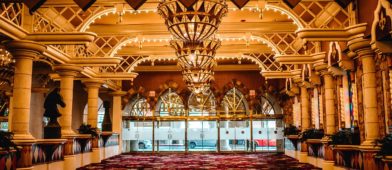F.I.R.E. – or Financial Independence, Retire Early – is a favorite topic here at Wallet Hacks (and everywhere really!). Not only do we write about the overall concept of FIRE, but also the different variations.
Coast FIRE is one of the more interesting versions. With Coast FIRE, you build a portfolio early in life that can grow enough to fund your retirement, then live your life – or coast – until the big day arrives. That’s where this FIRE flavor gets its name.
Note from Jim: I first heard about this flavor of FIRE from The Fioneers, who I consider the pioneers of Slow FI. It was discussed on this interview with Robert from Stop Ironing Shirts. While it’s really difficult to say who “invested” the concept, as many people have been doing various versions of FIRE for decades without having names, I do want to tip my cap to the folks who I saw write about it first.
Table of Contents
Understanding the Basics of FIRE
The FIRE movement, at its core, is about building an investment portfolio large enough to enable you to retire early, or at least to achieve a level of financial independence that will give you plenty of options in life. Mostly, it liberates successful participants from their current occupations, even if they never fully retire.
FIRE’s “secret sauce” is to live well below your means early in life while saving and investing as much money as possible to retire long before the traditional age of 65.
But, loosely speaking, how does this work from a numbers standpoint?
First, determine how much money you need to live each year then multiply it by 25. The result is your target portfolio size.
The multiplier of 25 is based on the 4% safe withdrawal rate. It holds that a portfolio invested in a mix of stocks and bonds will provide a limitless source of income using that withdrawal rate.
As an example, let’s say you anticipate needing $60,000 per year to live. To arrive at your FIRE portfolio, you will need $1.5 million. That’s $60,000 X 25.
As you can imagine, a portfolio that size will take several years and a generous helping of living beneath your means. But FIRE participants do it because they determine the payoff is well worth the near-term sacrifice.
The Five Main Versions of FIRE
In addition to Coast FIRE, there are four other major variations:
Regular FIRE
Regular FIRE lies at the core of the FIRE movement. Build a sufficient portfolio to cover your living expenses. The purpose is for investment income to replace your job income, eventually.
Fat FIRE
Fat FIRE is designed to increase your standard of living once you reach your goal. For example, you may want to build a portfolio large enough to produce an income of $120,000 to replace your current income of $60,000. It’s not easy, but you have to admit the prospect is exciting!
Lean FIRE
Lean FIRE is the exact opposite of Fat FIRE. Rather than aiming to increase your living standard, your focus should be to build a portfolio to cover your basic living expenses, like food, housing, and transportation.
Use more enjoyable forms of employment to cover the rest because it’s more about financial independence than early retirement. For many, this is the most attainable FIRE version.
Barista FIRE
Barista FIRE is closely related to Lean FIRE. The goal is to build a portfolio designed to cover most of your living expenses and plan to continue working at a reduced capacity to cover the rest. “Barista” is the term that applies to employees of Starbucks, which is famous for hiring employees on a part-time basis and even providing health insurance.
What is Coast FIRE?
What most distinguishes Coast FIRE from the other four versions is that it takes place in three stages:
- Accumulation of the initial portfolio. Here’s where you build a portfolio large enough to grow to your FIRE target by the specified date.
- The “Coast” phase. Once you build the initial portfolio, you can relax since you’ll no longer need to fund it – this frees you up to take a less challenging job.
- FIRE Achievement. Your portfolio has reached its target size, and FIRE becomes your primary lifestyle.
Coast FIRE can be indistinguishable from the other types of FIRE during the first and third phases. During the first phase, you’ll be earning as much as possible, living well beneath your means, and saving every penny possible. And during the third phase, you will have achieved full FIRE status.
The second stage is the definitive one with Coast FIRE.
Though it can work at just about any age, it will work best for younger people. Of course, that’s true of every version of FIRE.
Since you will go through your period of sacrifice early in the process, you’ll be able to kick back once you complete this phase. You’ll build an extensive enough portfolio that you’ll only need to work to earn as much as you need to live.
Since you’ll no longer need a high income to accumulate outsized savings, you should be able live on a lot less than you do right now. Even before achieving full FIRE, you can live a much more exciting and stress-free life.
There’s probably more flexibility with this version, too, especially concerning retirement age.
Since you’ll be achieving a better lifestyle earlier in life, there may be no need to retire at 40, 45, or 50. If you clear Phase 1 by, say, age 30, you may decide to continue working until you reach 65.
Calculating Your Coast FIRE “Number”
No matter which version of FIRE you pursue, calculating a FIRE number is mission-critical.
Make that two numbers.
The first is the amount of income you need to live, and the second is the portfolio size required to produce it.
For example, you’re 30 years old, and you’d like to reach Regular FIRE by 55. If you need $60,000 per year live, you’ll need to build a portfolio of $1.5 million ($60,000 X 25).
If you build a portfolio of $325,000 by age 35 and invest the money at 8% for 20 years, you’ll have just over $1.5 million by the time you reach 55.
Why Should You Choose Coast Fire?
Like Lean FIRE or Barista FIRE, Coast FIRE will typically be easier for most people to achieve. You’ll build your portfolio early in life when expenses are lower, and you have more energy to get the job done.
But the payoff is that once you reach the initial required portfolio size, you’ll already begin to enjoy many of the benefits of FIRE. You may only need ten years to reach that level, and even less if you already have saved a decent amount of money.
Coast FIRE is different from the other versions of FIRE that require an accumulation phase of 20 to 25 years, and a lot more patience and sacrifice than most people are willing to make.
Meanwhile, after you reach the initial required portfolio size, you’ll already be able to begin kicking back in life. That may mean working less and spending more time on activities you enjoy in life.
Because you’ll no longer be concerned with accumulating money for retirement, you may also experience less work-related stress. Your main goal will be to enjoy your life and your work between now and then.
Coast FIRE Pros & Cons
Pros:
- You can reach it more quickly than other versions of FIRE.
- Provides a soft version of FIRE once you reach the initial portfolio requirement.
- The end version of Coast FIRE can be Regular, Lean, Fat, or Barista FIRE.
- It removes the time pressure to achieve FIRE.
- You can maintain employment, even part-time, to provide insulation against inflation and stock market crashes.
- A W-2 job can offer a source of low-cost health insurance throughout the coast phase.
Cons:
- It takes longer to reach early retirement if that’s your primary goal.
- It may require a drastic reduction in your current lifestyle during the accumulation portfolio phase.
- During the “Coast” phase, financial stress is reduced but not eliminated.
- Like all forms of FIRE, it’s difficult to attain on a low income if you have children or elderly loved ones to care for, or additional expenses, like child support or alimony.
- Inflation, stock market crashes, and health insurance are consistent problems across the board for all FIRE versions.
Final Thoughts on Coast FIRE
Even though Coast FIRE is a softer version of FIRE, it will require many of the same sacrifices. That will include spending several years working to earn as much you can while living as close to the ground as possible. The goal will be to save and invest a disproportionate amount of your income, even as you watch others dedicating more money to living the good life.
But if you can focus on the ultimate goal – financial independence – or even retirement, the outcome will justify the sacrifice you need to make.



